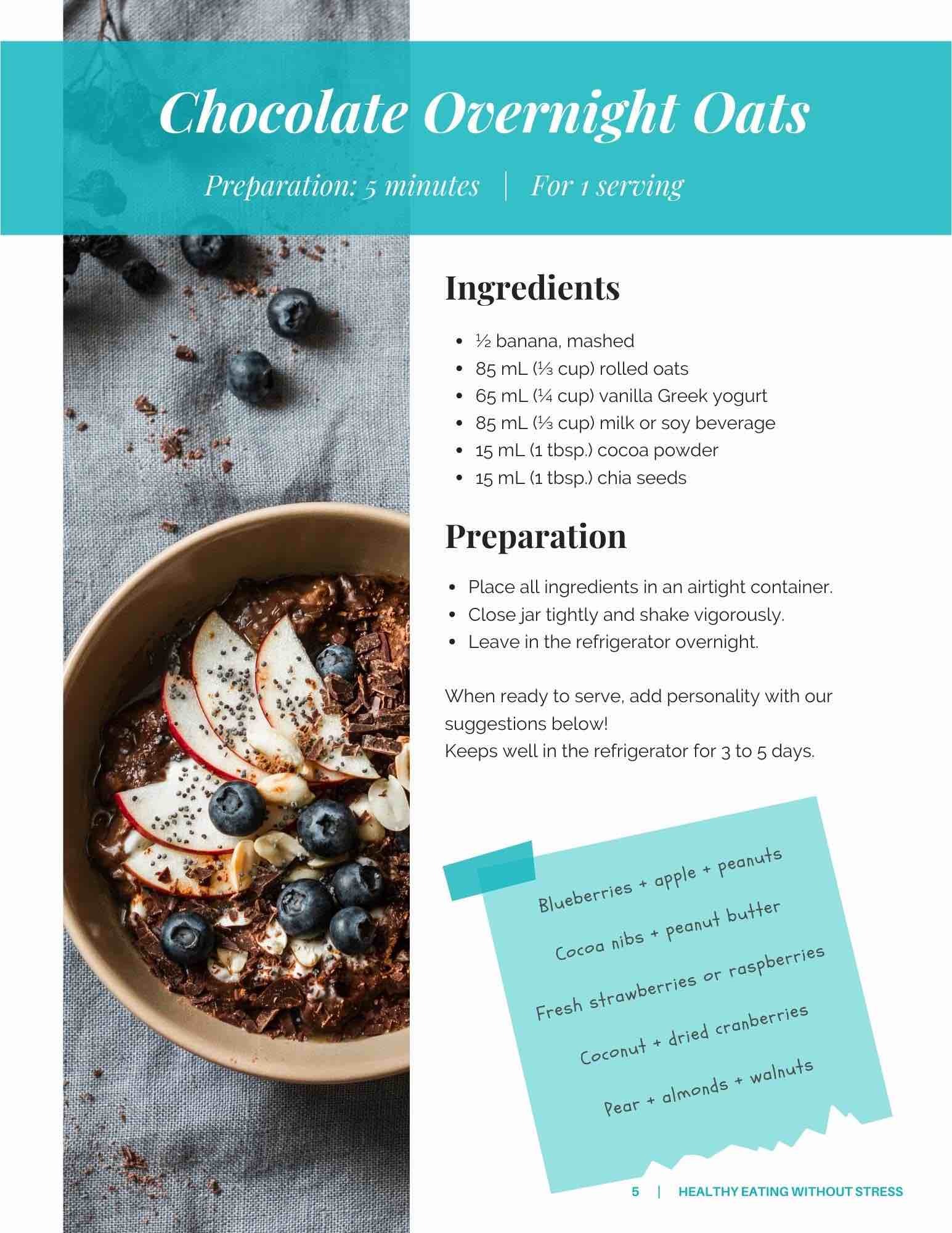
Between work, school, and after-school activities, finding time to prepare healthy family meals can feel like a juggling act. Yet, sitting down to a balanced dinner doesn’t need to be complicated—or perfect. A few small changes can make a big difference in energy, focus, and family connection.
Here are five realistic tips from our nutritionists and dietitians in Oakville to help you make family meals more balanced, enjoyable, and stress-free.
1. Plan Simple, Balanced Meals Around Local Essentials
Meal planning doesn’t have to mean spending your Sunday batch-cooking for hours. Even planning three or four balanced dinners each week can reduce the daily stress of “What’s for supper?”
Start with a few basics your family enjoys—like chicken, beans, eggs, or whole grains—and build flexible meals around them. Stock up on fresh or frozen produce and pantry staples that make healthy eating easier.
You can shop for example at Farm Boy or Fortinos, but focus on variety rather than perfection. Create a weekly menu board on the fridge and rotate your family’s favourites. Reusing meal ideas saves both time and decision fatigue.
For inspiration, try a few easy, balanced recipes from TeamNutrition:
- Feta and Tomatoes One-Pot Pasta — A comforting, minimal-dish meal where pasta, veggies, and sauce all cook together in one pot.
- Taco Casserole — A crowd-pleasing family dinner that layers grains, vegetables, and protein in a single baking dish.
- Sheet Pan Marinated Tofu and Roasted Vegetables — A simple “one-pan” solution that combines plant-based protein and colourful roasted vegetables for a balanced, hands-off meal.
These time-saving options fit perfectly into busy Oakville evenings while keeping your family’s nutrition on track.
2. Build Balanced Plates Everyone Enjoys
According to Canada’s Food Guide, a balanced plate should include half vegetables or fruits, one-quarter protein, and one-quarter whole grains. But that doesn’t mean every meal has to look like a textbook example.
People who are very active, such as kids in sports or parents training regularly, may benefit from adding a little more whole grains or starchy vegetables to support their energy levels. On quieter days, meals with more vegetables and lean protein might feel better.
For a truly personalized approach, ask your family dietitian nutritionist. They can help you adjust your portions and meal balance according to your family’s needs, activity levels, and goals.
Here’s how you can make it family-friendly:
- Make veggies visible and appealing — Serve colourful vegetables front and centre: roasted carrots and peppers, cucumber rounds, or a rainbow salad bar where everyone picks their colours. Add a fun dip like hummus or yogurt sauce to make them more inviting.
- Picky eater at home? Try mixing veggies into familiar dishes—like grated zucchini in baked goods or pasta sauce, spinach in smoothies, or finely chopped peppers in quesadillas. It’s an easy way to add nutrients without the battle.
- Offer build-your-own meals — Set out simple components like whole-grain tortillas, rice, chopped veggies, and a protein. Let everyone assemble their own tacos, wraps, or bowls—it boosts curiosity and reduces picky eating.
- Reuse ingredients creatively — Turn roasted vegetables from one meal into omelets, pasta toppings, or lunch wraps the next day.
- Make flavour fun for kids — Offer simple sauces or toppings they enjoy, like grated cheese, mild salsa, or a touch of ranch dressing. Encouraging kids to explore flavours in small ways makes healthy foods feel familiar and fun.
Balanced eating becomes easier when everyone at the table feels involved and when meals are built around what your family already loves.
3. Embrace the “Good Enough” Principle
Healthy doesn’t have to mean perfect. Life gets busy—and that’s okay. What matters most is putting together meals that are good enough most of the time.
A balanced supper can absolutely include a few shortcuts. The goal isn’t to cook everything from scratch but to build on what you already have.
Here are some “good enough” ideas for busy Oakville families:
- Frozen pizza night? Add a side of baby carrots and lebanese cucumbers, a salad kit, or top the pizza with extra veggies before baking.
- Boxed mac and cheese for dinner? Mix in cooked cauliflower and leftover chicken for a boost of protein and fibre—or try our Tuscan Mac and Cheese recipe for a homemade twist that’s just as easy and family-friendly.
- Grilled cheese sandwich? Serve it with tomato soup or raw veggies and hummus.
- Rotisserie chicken? Pair it with microwave rice and frozen mixed vegetables for a balanced meal in minutes.
- Breakfast for dinner? Whole-grain toast, scrambled eggs, and fruit make a perfectly fine quick meal.
As many dietitians remind families, it’s not about eating perfectly every day—it’s about finding balance across the week. A flexible, realistic approach helps families stay consistent and enjoy mealtime more, without the guilt.
4. Streamline Grocery Shopping and Prep
Keeping family meals balanced doesn’t mean spending hours in the kitchen. It’s about making small, clever tweaks that save time, reduce waste, and keep everyone fed—even when hockey practice runs late or meetings run long.
Try these practical ways to make meal prep feel easier:
- Create a “family favourites” list. Keep a short list of 8–10 easy meals your family loves—like pasta, stir-fries, or currys. Rotate them to simplify planning and grocery lists.
- Shop with flexibility in mind. Instead of planning rigid recipes, stock up on mix-and-match staples—like eggs, pasta, rice, frozen veggies, canned beans, and pre-washed greens. They can easily become quick bowls, wraps, or soups.
- Batch prep smarter, not longer. Roast a tray of vegetables while baking chicken, or cook extra rice to use later in fried-rice or burrito bowls. Spending 30 minutes once can save you hours later.
- Use your freezer as a time-saving ally. Freeze leftover pasta/pizza sauce in muffin tins or smoothie ingredients in small bags for instant weekday breakfasts.
- Share the load. Even young kids can help: washing lettuce, choosing tomorrow’s lunch fruit, or setting the table. When everyone pitches in, it becomes a shared routine—not just one person’s job.
These small habits make balanced eating feel doable and automatic, helping your family stay nourished without adding extra stress to your week.
5. Cook and Eat Together Whenever You Can
Sharing meals isn’t just about nutrition—it’s also about connection. Regular family meals are linked to better food choices, improved communication, and even stronger emotional wellbeing.
Set realistic goals for your household—maybe two or three shared dinners per week. Turn off screens, talk about your day, and enjoy the process of eating together.
Even if the menu is simple, those moments at the table help kids develop a positive relationship with food and with each other.
Get Personalized Support from a Local Nutrition Expert
Every family has its own challenges—picky eaters, allergies, busy schedules, or limited cooking time. A registered dietitian in Oakville can help you find solutions that actually work for your household and lifestyle.
With professional guidance, you can:
- Create realistic meal plans your family will actually enjoy—flexible enough for busy nights and different tastes.
- Manage picky eating with proven strategies to reduce pressure, encourage curiosity, and help kids build a positive relationship with food.
- Navigate food allergies or intolerances safely without feeling restricted or cooking multiple meals.
- Shop and cook with confidence, learning how to make quick, balanced choices your family will love.
- Build sustainable habits that grow with your family—whether you’re raising adventurous eaters or feeding a household full of different preferences.
Ready to make balanced family meals easier?
Book a consultation with an Oakville dietitian nutritionist and discover how small, realistic changes can make your family’s mealtime both healthier and happier.
Our health care professionals are members of the College of Dietitians of Ontario (CDO) and provide insurance receipts for their services.






